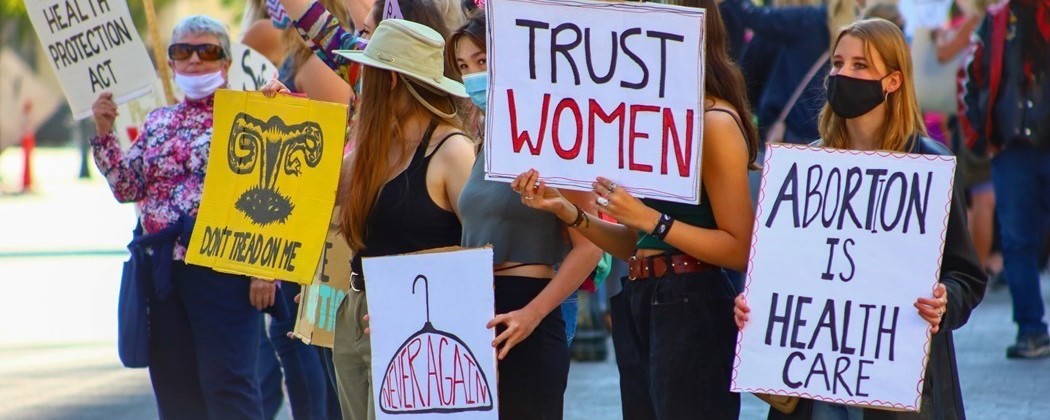Roe V Wade - Abortion Rights in the USA
Posted on 26th June 2022
This is a long one you might want to get comfy, maybe make a cup of tea...
You may or may not have seen on the news that Roe V Wade was overturned by the US Supreme Court a few weeks ago, and this decision was a contentious one. But what is it, and what does it mean?
Roe V Wade was a landmark decision made in 1973, that the Constitution of the United States generally protects a pregnant person's liberty to choose to have an abortion. This decision struck down many federal and state abortion laws, and fueled an ongoing debate about whether, or to what extent, abortion should be legal, and what the role of moral and religious views in the political sphere should be.
The case was brought by Norma McCorvey, known as Jane Roe, who became pregnant and wanted an abortion, but lived in Texas, where at the time it was illegal except when necessary to save the mother's life. A lawsuit was filed on her behalf against her local district attorney, Henry Wade. The case was ruled in her favour, and declared that the relevant Texas abortion laws were unconstitutional. This was then appealed to the Supreme Court.
The Supreme Court has 9 Justices that sit for life, and so all decisions are made by reaching a majority in agreement. The Justices are, however, appointed by the President, so whilst they are not supposed to have any bias or allegiances, a President would not appoint a Justice that does not agree with their political views. Chief Justice John Roberts was appointed by George W Bush in 2005. George W Bush also appointed Samuel Alito in 2006. George Bush Sr appointed Clarence Thomas in 1991. Bill Clinton appointed Stephen Breyer in 1994. Barack Obama appointed Sonia Sotomayor and Elena Kagan in 2009 and 2010 respectively. Donald Trump appointed Neil Gorsuch in 2017, Brett Kavanaugh in 2019, and Amy Coney Barrett in 2020. This means that the Supreme Court is currently more conservative-leaning, with Stephen Breyer, Sonia Sotomayor, and Elena Kagan being generally more liberal in their views.
On January 22nd 1973, the Supreme Court issued a 7–2 decision in favor of "Jane Roe" (Norma McCorvey) holding that women in the United States had a fundamental right to choose whether to have abortions without excessive government restriction.
On June 24th 2022, the Supreme Court renounced Roe V Wade, as well as Planned Parenthood V Casey, another decision that extended it in 1992. This was a 6-3 decision.
A draft opinion by Samuel Alito was leaked in May this year, and so some states moved to restrict access to abortion then, once they knew it was likely that the Supreme Court would overturn their decision. Alito wrote, "Roe was egregiously wrong from the start. Its reasoning was exceptionally weak, and the decision has had damaging consequences. And far from bringing about a national settlement of the abortion issue, Roe and Casey have enflamed debate and deepened division."
"We hold that Roe and Casey must be overruled...The Constitution makes no reference to abortion, and no such right in implicitly protected by any constitutional provision...It is time to heed the Constitution and return the issue of abortion to the people's elected representatives," Alito wrote.
Justices Stephen Breyer, Sonia Sotomayor, and Elena Kagan released a joint dissenting opinion that strongly criticized the move. “With sorrow—for this Court, but more, for the many millions of American women who have today lost a fundamental constitutional protection—we dissent,” they wrote.
In their scathing joint dissent, the court’s liberal justices wrote, “The majority has overruled Roe and Casey for one and only one reason: because it has always despised them, and now it has the votes to discard them. The majority thereby substitutes a rule by judges for the rule of law.”
"The majority would allow States to ban abortion from conception onward because it does not think forced childbirth at all implicates a woman's rights to equality and freedom..Today's Court, that is, does not think there is anything of constitutional significance attached to a woman's control of her body and the path of her life...A State can force her to bring a pregnancy to term, even at the steepest personal and familial costs."
Sixteen states have put their own laws in place to protect the right to end a pregnancy, and some lawmakers from these states have also vowed to protect abortion rights.
"Our daughters, sisters, mothers, and grandmothers will not be silenced. The world is about to hear their fury...", California Governor Gavin Newsom wrote on Twitter.
So those are the facts. In situations such as these, it is best to try and educate yourself as much as possible, from neutral sources. Our thoughts are with everyone in the US at this time, as they try to move forwards in the wake of this landmark decision.
Can we assist you in the Family Court? Contact us today
Share this post:



